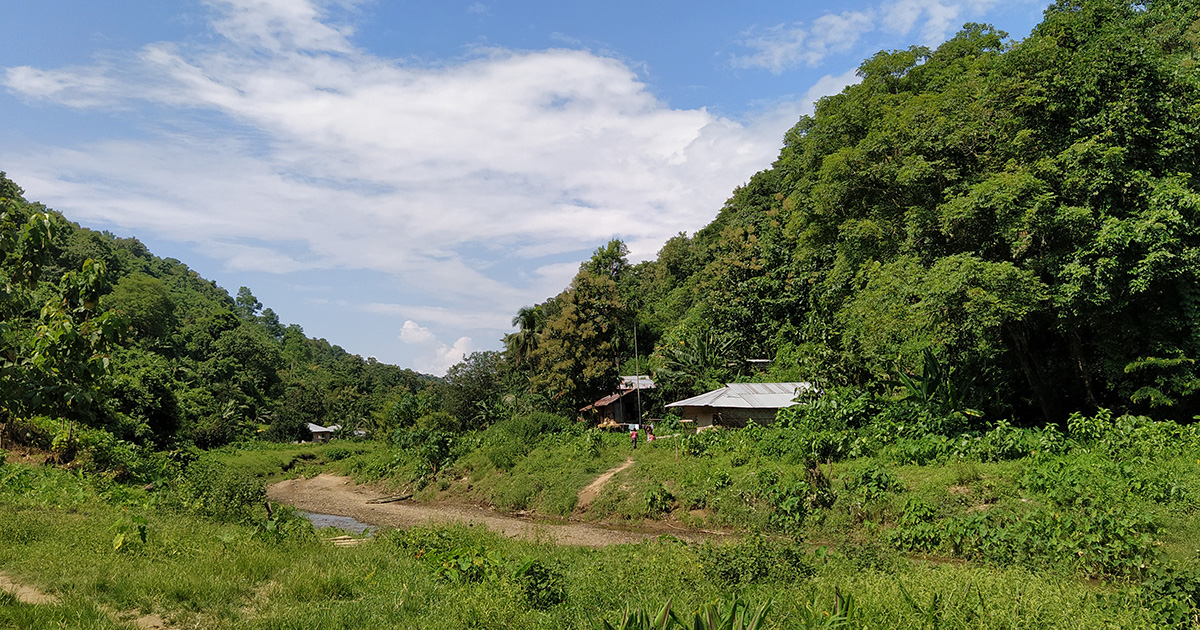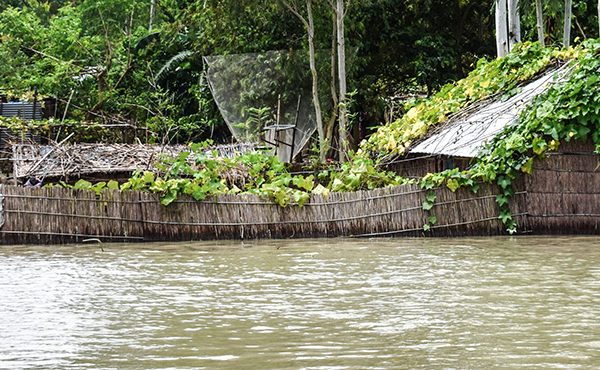Reading Time: 2 minutes
Chittagong Hill Tracts is home to 11 different ethnic groups and has a population of 1.6 million. Around 70% of this population resides in the rural areas. They rely exclusively on natural resources for their daily sustenance.
In recent decades, communities in the Chittagong Hill Tracts region have increasingly been experiencing the brunt of climate change on their livelihoods, in the forms of uneven rainfall patterns and changing climatic patterns.
“Just 10 years back there was water flowing down the springs throughout the year, but now most of the springs dry out early in winter”, said a local resident from Barakal upazila of Rangamati, with a sense of hopelessness.
This water channel is the only source of water for them, and their water security is now in jeopardy due to the springs drying out. The large sink of natural resources provides livelihood and other support to hundreds of ethnic and Bengali communities living there.

A water channel that dried out early due to lack of rainfall
People indigenous to the hill tracts have long been applying traditional knowledge to live in harmony with such natural resources. The changing climatic patterns are not only disrupting their relationship with nature, they are also exposing the community to unforeseen challenges. Challenges which drastically affect their lives and livelihoods.
How can they identify the appropriate solutions, in this case? Building resilience of this community is imperative, if they are to adapt to the impacts of climate change.
To address this issue, UNDP and BRAC are partnering up to build climate resilience of people living in the CHT areas, with support from Danish International Development Agency. The project covers 10 upazilas of the area, where BRAC will provide training to the communities so that they – by developing resilience plans – can assess their own vulnerability and build resilience in the face of climate change impacts.
BRAC’s climate change programme has developed and drafted two user guides, based on which the training modules will be designed. One guide is for assessing how vulnerable the community is to the climate, while the other guide is for developing the resilience plans.
A validation workshop was held in Rangamati last month, to present the user guides to the community. Key participants included chairmen of different upazilas and unions, technical officers from local government organisations, community leaders and representatives from local committees.

Community level validation workshop in Rangamati
After the presentation, participants provided their feedback on the methods used in the guides, which were later integrated. The workshop also conducted an interactive group work session to test the suggested methodology mentioned in the guides.
The participants recommended that nature-based solutions remain a top priority when designing resilience plans. Using indigenous knowledge, especially when it comes to finding solutions to the problems faced by communities living in the Chittagong Hill Tracts, is a vital facet that cannot be under-utilised. While the timely and necessary documents prepared by BRAC and UNDP were welcome initiatives for the participants of the workshop, the community urged that solutions also take into consideration the ecosystem at large.
Rafid Mahmud Khan is Deputy Manager, Climate Change Programme, BRAC.





